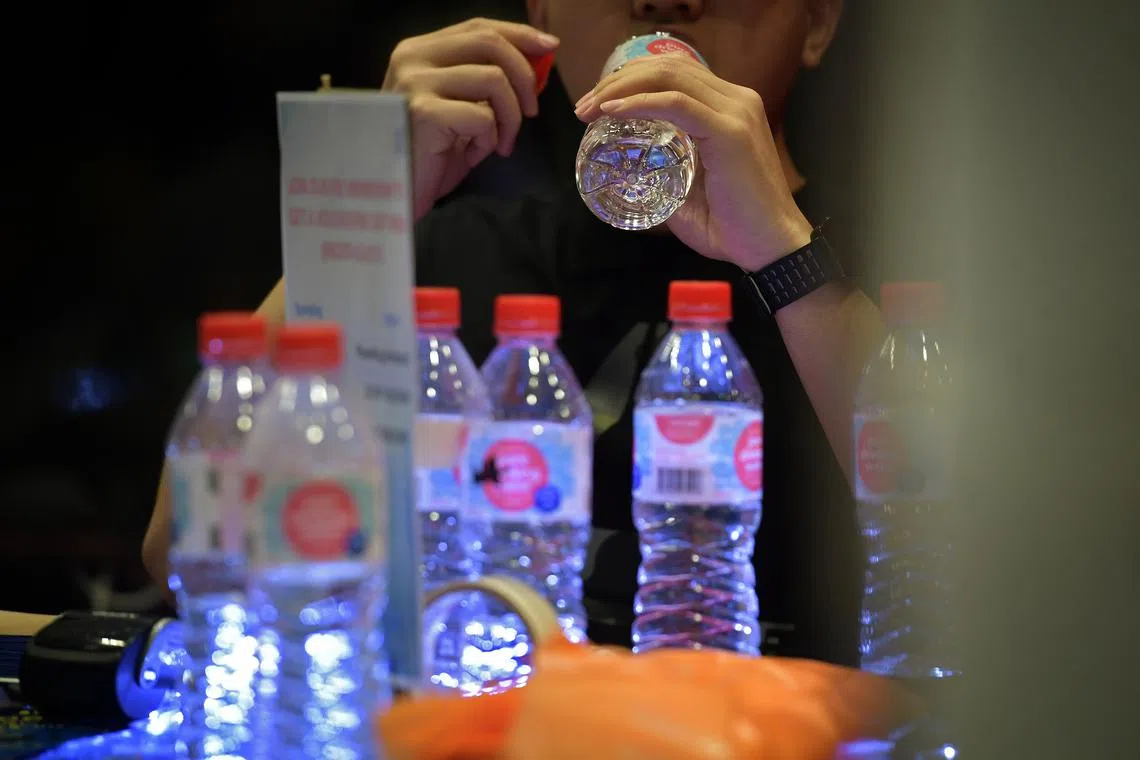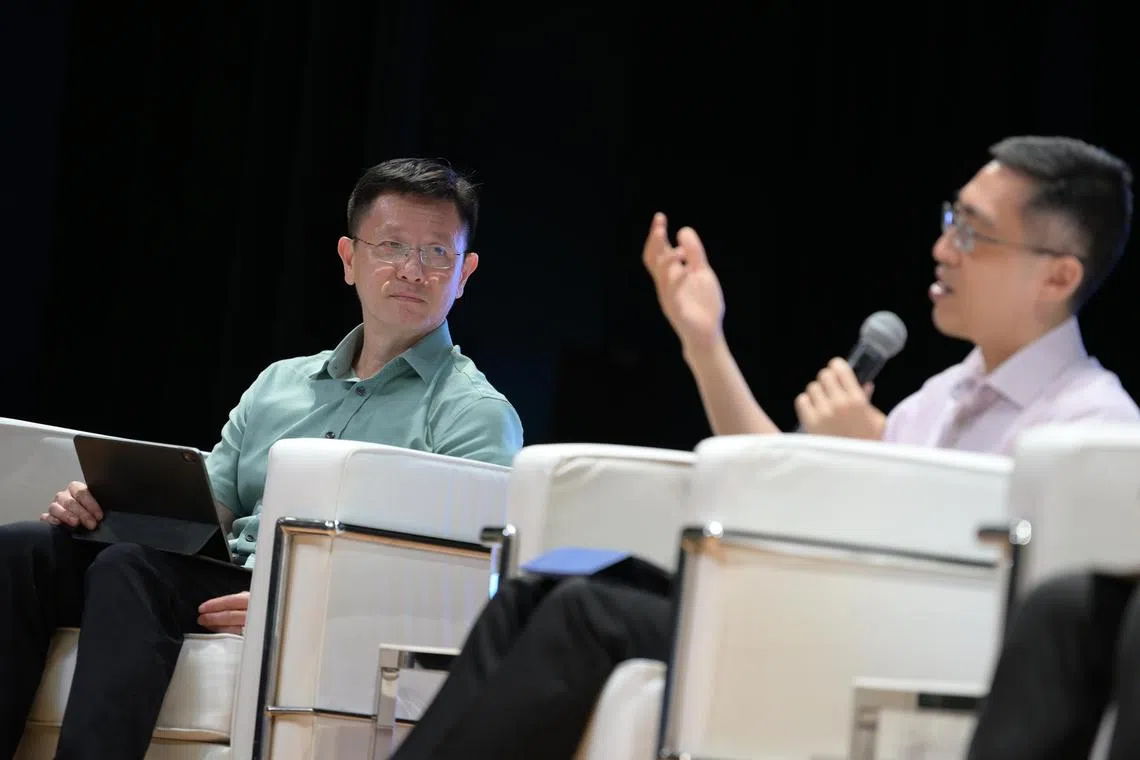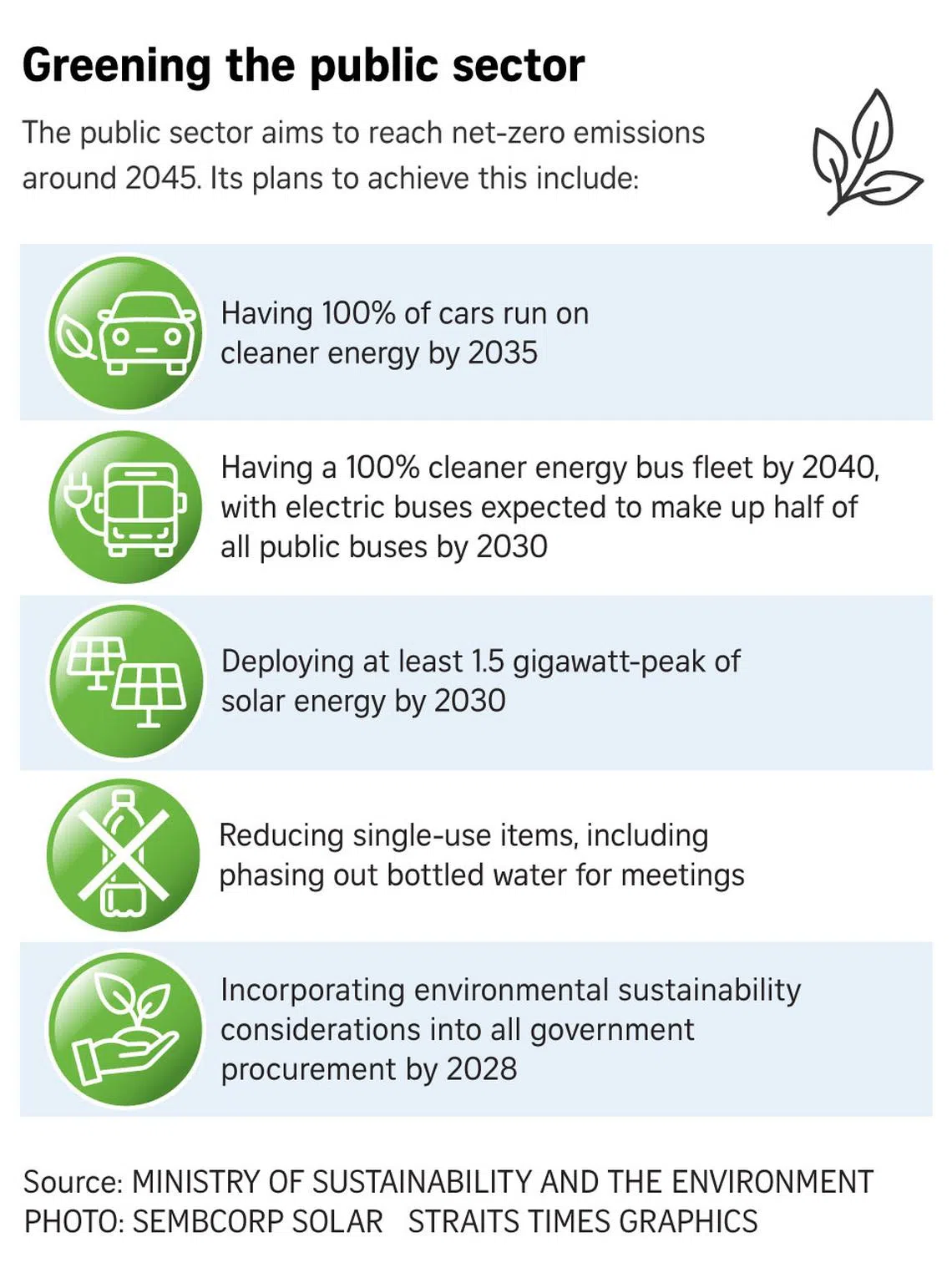Reducing single-use items a priority in public sector’s first environmental sustainability report
Sign up now: Get ST's newsletters delivered to your inbox

Water usage rose 1.2 per cent, mainly due to a gradual re-opening of the economy post-pandemic and an increase in activities.
ST PHOTO: KUA CHEE SIONG
Follow topic:
SINGAPORE - The public sector is prioritising reducing single-use items such as bottled water for meetings and disposables for dine-in meals, and seeking to replace potable water with non-potable water for irrigation, general washing and cooling.
These are some of the moves the public sector is employing to improve environmental sustainability, according to the inaugural GreenGov.SG report, which detailed carbon emissions, as well as water and electricity usage by the public sector and its assets, such as office buildings, healthcare facilities, schools, public utilities installations, public transport infrastructure and vehicles.
Government agencies are also reducing the number of lifts operating at non-peak hours, and installing more energy-efficient lighting and air-conditioners.
Launching the report on Dec 15 at Singapore Polytechnic, Senior Parliamentary Secretary for Sustainability and the Environment Baey Yam Keng said it publicly tracks the progress in the use of electricity and water, as well as emissions that would chart towards net-zero ambitions around 2045 – five years ahead of the national target.
The report published by the Ministry of Sustainability and the Environment, the first such report in South-east Asia, showed that the public sector accounted for 7.2 per cent of total carbon emissions produced in Singapore in FY2021, going by the latest figure provided by the National Climate Change Secretariat.
In FY2022, the public sector emitted less carbon – 3.7 million tonnes, 5.3 per cent less than FY2020 – mainly due to the closure of the Tuas Incineration Plant in 2022. Collection of this data started in 2020.
Emissions are expected to peak around 2025 as more activities resume post-pandemic, and more new major public infrastructure projects for transport, healthcare and utilities are completed in the coming years.
The sources of emissions in the report come from Scope 1 and 2 emissions. Scope 1 refers to direct emissions – such as emissions from facilities or vehicles that run on fossil fuels like natural gas, petrol and diesel. Waste incineration as part of waste management services is also a form of direct emission.
In FY2022, Scope 1 emissions were at 1.37 million tonnes, while Scope 2 emissions were at 2.3 million tonnes.
The use of electricity comes under Scope 2 emissions. Over 90 per cent of electricity in Singapore is generated using natural gas.
The report said the public sector used 5,591 gigawatt hours of electricity and 32.9 billion litres of water in FY2022. Both were benchmarked against the average of 2018 to 2020 to better reflect hybrid working arrangements post-pandemic.
Water usage rose 1.2 per cent, mainly due to a gradual re-opening of the economy post-pandemic and an increase in activities. The increase of 1.7 per cent in electricity usage was attributed to the expansion of the public transport network and healthcare facilities.
Said Mr Baey: “By tracking how much it has consumed, the public sector will be motivated to identify gaps and opportunities to reduce its footprint further.”

Senior Parliamentary Secretary for Sustainability and the Environment Baey Yam Keng speaking at the launch of the report on Dec 15.
ST PHOTO: NG SOR LUAN
Scope 3 emissions, which is often incurred by an organisation as part of its value chain like business travel by employees, was not included in the report.
Scope 3 emissions might include anything from the production of purchased goods to the disposal of products at the end of their lifecycle in the public sector, said Deloitte South-east Asia’s sustainability and climate leader Brian Ho in response to queries from The Straits Times.
Mr Ho added that Scope 3 emissions can account for a significant portion of total emissions, often exceeding the total of Scope 1 and 2 emissions.
Speaking at a panel discussion on the Public Sector’s Approach towards Sustainability at Singapore Polytechnic, government chief sustainability officer Lim Tuang Liang said for Scope 3 emissions, “it will take a lot more time to be able to take into account the upstream as well as the downstream emissions from the larger value chain that the Government operates within”.
With Scope 3 emissions being further subdivided into 15 categories, Mr Lim added: “We are studying… which ones are the most relevant to the Government as a whole on average, so that then we can collectively make interventions.”

Government chief sustainability officer Lim Tuang Liang (left) speaking at a panel discussion at Singapore Polytechnic on Dec 15.
ST PHOTO: NG SOR LUAN
Reporting on Scope 1 and 2 emissions can form the tool and necessary foundations to report on Scope 3 emissions, said Mr Lim, addressing 800 civil servants and industry stakeholders during a panel discussion.
“Essentially, what is Scope 3 is actually Scope 1 and Scope 2 of different components and evaluations. Globally, the immediate focus should be on Scope 1 and 2, so that then we’ll be able to move on to Scope 3 conversations as soon as we can,” he said.
Waste generated by the public sector is not included in the data. More time is needed to improve the data collection processes for waste, said the report, citing that waste disposal is not metered, unlike electricity and water use.

As waste tends to be co-mingled at bin centres, the report noted it would be more challenging to attribute the waste amount to an agency, particularly when some government agencies are co-located with non-government agencies.
Added Mr Lim: “We are actually working on improving and cleaning up the waste related data so that we will be ready for the next report.”
Correction note: In an earlier version of the story, we said that the public sector aims to reach net-zero emissions in 2045. The Ministry of Sustainability and the Environment has since clarified this target is not definitive.

